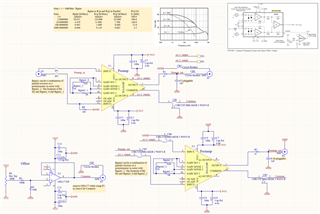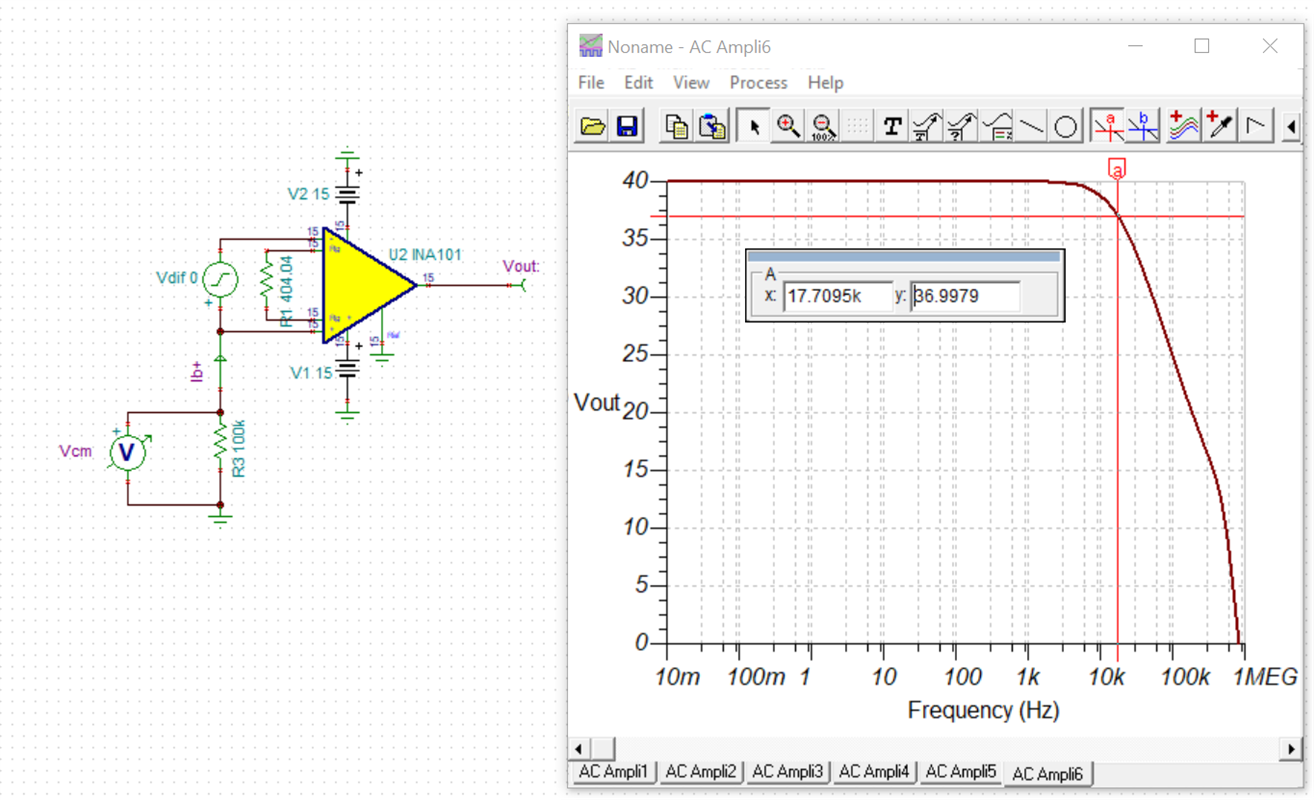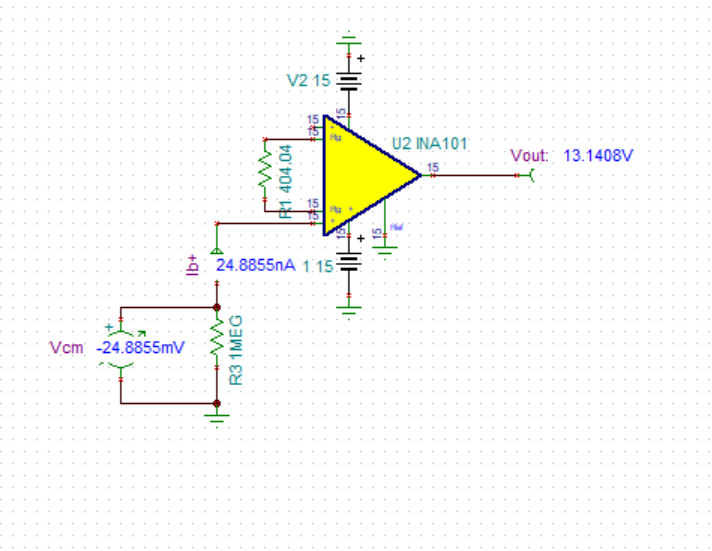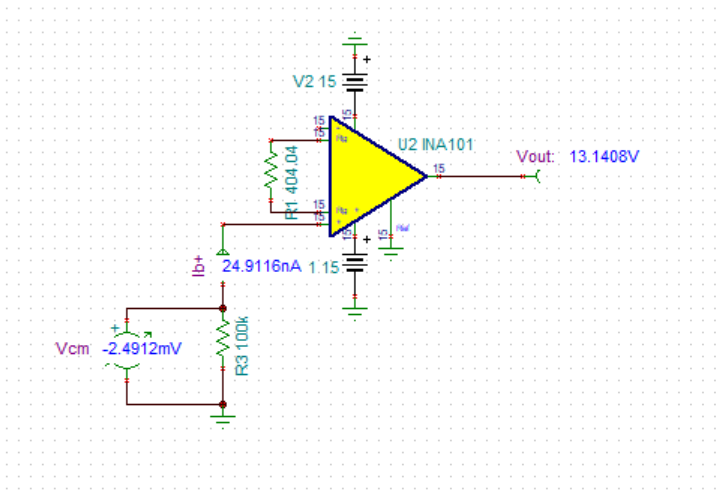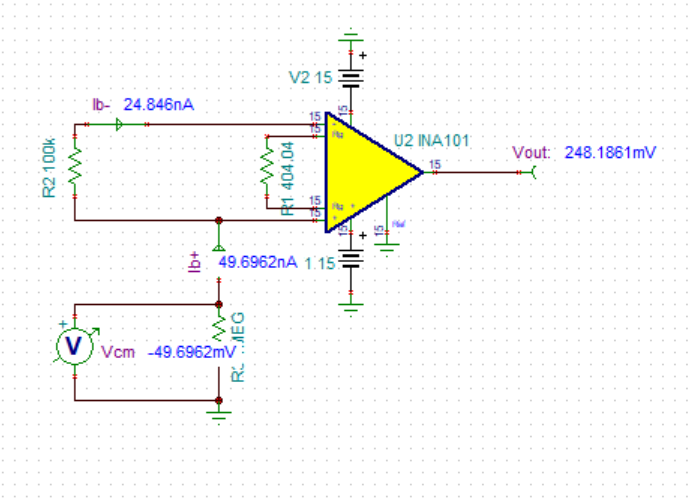Other Parts Discussed in Thread: OPA177,
Hello,
I'm using two INA101HP (DIP package) stages in series.
The signal from a sensor (~100Ohms) as input for the Amplifier is 0-500uV AC with a DC-offset in the range of 0-120mV. The input signal is floating therefore a 1MOhm resister is connected at pin12 (+Input) to GND, to provide the path for the input bias current.
Power supply is at +/-15V. The gain of each stage is G=100. No input offset compensation.
The first stage is using the output offset compensation circuit with the OPA177 exactly as shown in the datasheet with adjusted resistors. The output offset compensation is used to get rid of the input DC-offset in the range of the 0-120mV (AC-coupling the signal is not an option). The second stage further amplifies the 0-500uV AC signal without any offset compensation.
After a few minutes the output of the first amplifier stage starts jumping randomly. Pin 14 (common) shorted to GND (replacing the OPA177 offset compensation) then doesn't resolve the problem
Does it mean the INA101 experienced some kind of degradation? What could be the cause of degradiation and is there anything else to consider?
Best,
Beat



